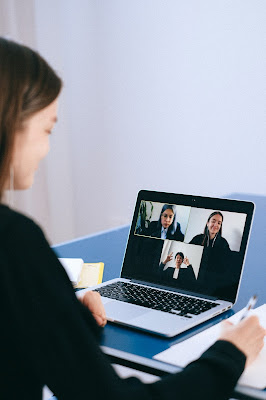 |
| Image credit: Pexels |
Author: Alexandria Gregory, MD
Originally published: Common Sense
September/October 2020
If your residency is like most programs, your pre-COVID didactics likely consisted of several hours of in-person conference once a week. That common, traditional way of learning has been turned upside down with the need for social distancing, and most programs have transitioned to virtual conferences. As the reality of COVID persists, it is important to continuously evaluate the effectiveness of virtual learning. Furthermore, in planning for a post-COVID era, it will be beneficial to determine whether virtual learning remains a valid, effective teaching technique despite being able to meet in-person.
To understand how virtual learning affects curriculum design, it is important to start by breaking down what, in general, emergency medicine residency curriculum looks like. Most programs include the following in some fashion:
- Core Topics
- Small-Group Sessions/Problem-Based learning
- Electrocardiogram (EKG)/Radiology Interpretation
- Morbidity and Mortality/Case Presentations
- Journal Club
- Ultrasound
- Grand Rounds
- Simulation/Procedure Lab
- Oral Board Review
- Asynchronous Learning
Of course, just because something can be done does not mean it should be done. Certainly, there are downsides of virtual learning. One of the underrated features of weekly in-person conference is the social interaction. Lectures are a time for residents to come together and interact informally outside of their shifts, which is especially true if lecture begins with breakfast or ends with lunch. Post-lecture Zoom hangouts, which some programs have tried, will never have quite the same effect. On a more practical level, accessibility, or lack thereof, poses a huge issue for virtual learning in general. Not everyone has access to the internet or computers, and even those that do may have difficulty learning new systems. During lecture itself, participation may not come as easily as it would during an in-person lecture. It can be an added challenge for lecturers to sit in a room and talk, seemingly to themselves, without real-time feedback from the audience. However, it can be argued that in-person lectures do not necessarily mean automatic audience participation and pose similar issues, and that in fact, use of the chat function actually allows for more discussion than would be possible in person because there is no need to interrupt the lecturer while participants add their thoughts and questions. Lastly, virtual lectures do not offer a suitable substitute for hands-on learning that is crucial for procedures and sim lab.
At the same time, however, virtual lectures do offer things that in-person lectures do not. First, they allow residents time to get things done—such as cooking, cleaning, and laundry—while also participating in lecture. Especially for residents with busy schedules, that extra time is crucial and much-appreciated. Similarly, lecturers and residents alike can be more easily available for the scheduled time when they do not have to factor in things like transportation time or childcare, which may actually encourage more participation in lectures overall. For those who still cannot make it to lecture, Zoom lectures are easier to record than in-person ones for those wishing to watch later.
Another significant advantage of virtual lectures is the ability to connect residents across the country through national live lectures. Academic Life in Emergency Medicine (ALiEM) Connect, a multiple-part live conference brought residents together nationwide from over sixty programs to learn from various experts in the field, such as Michelle Lin and Salim Rezaie. The series has been able to offer concise, focused talks that also foster group discussion through the use of Slack channels. Similarly, it is much easier to get experts to give lectures to a given program when they can do so from their own home or institution, rather than having to travel.
While there are certainly drawbacks to virtual learning, it is worth considering as an increasingly valid teaching technique, even when in-person lectures are again possible. The best scenario may be a hybrid model. For instance, in-person lectures could be replaced by virtual ones once a month, allowing residents a day to learn “conveniently” from home, while also recognizing the value of in-person lectures for activities such as sim lab and other interactive sessions. Regardless of the way lectures are presented, quality education relies on the both the learner and educator to be invested. Ultimately, we are being forced to re-examine the way we teach and the way we learn to foster that investment, which makes this time a pivotal moment in medical education.
